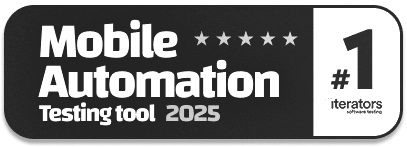Quality Assurance to Quality Engineering Transformation – A Guide
|
|
Today, the traditional gatekeeper role of Quality Assurance (QA), which is often positioned as a final checkpoint before release, may sometimes reveal its limitations. While diligently identifying defects at the eleventh hour remains crucial, relying solely on this reactive approach struggles to keep pace with the demands of continuous delivery, intricate system architectures, and the unwavering expectations of today’s users.
This necessitates a fundamental shift, a move beyond simply assuring quality to actively engineering it into the very fabric of our software development lifecycle. This is what brings us to quality engineering (QE).
Key Takeaways
|
Understanding Quality Assurance (QA)
QA, at its core, is about making sure that a product is functional, reliable, and bug-free. Traditionally, the primary focus of QA has been to catch issues after the software has been developed, during the testing phase.
Key Responsibilities of QA Teams
- Manual Testing: In traditional QA, you’ll primarily see manual testing techniques being used, maybe with some basic testing tools. Testers go through the software step by step to look for bugs, glitches, or errors. This process is often repetitive and time-consuming, but essential to ensure that the software works as intended.
- Defect Detection: The QA team’s job is to spot any defects in the software before it is released to customers. If something didn’t work, it would be reported back to the development team to fix.
- Quality Control: QA also ensures that the final product adheres to a set of predefined quality standards, often outlined by the project or product manager.
Challenges Faced by QA Teams
While QA is crucial to software development, it isn’t always the most efficient or flexible process. Some of the common challenges included:
- Time Delays: Manual testing can take a long time, especially when testing large and complex systems. This often delays the overall project timeline.
- Bottlenecks: QA testing often happens late in the development cycle, which means that any issues found will delay the release even further. This creates bottlenecks and slows down the release process.
- Lack of Automation: With many processes still done manually, QA teams can’t always keep up with the increasing pace of software development. This is especially true for repetitive tasks, which can be automated to save time and resources.
This sequential approach made sense for Waterfall models, where you had enough time on your hands to manually test every single thing. Now, however, in the Agile era, time is of the essence. It has become clear that traditional QA methods were not enough to keep up with the increasing demands for faster, more reliable software. This has led to the emergence of a new approach, one that not only focuses on finding bugs but also on building quality into the development process from the very start. This shift from QA to Quality Engineering (QE) is where the real transformation begins.
What is Quality Engineering (QE)?
Quality Engineering is an approach that goes beyond just testing the software. It’s about making sure that quality is considered and maintained at every stage of development. From the design phase to production, the focus is on building software with fewer defects, quicker releases, and continuous improvement.
Unlike traditional QA, which focuses mainly on testing and finding defects after development, QE takes a more proactive, holistic approach to building quality throughout the entire software development lifecycle. Instead of being the final gatekeeper, the QE team works alongside developers, ensuring that quality is built in from the very start.
Key Pillars of a Successful QE Transformation
- Building a Quality-First Culture: A successful shift to Quality Engineering goes beyond simply adopting new tools or workflows. It’s about instilling a strong, organization-wide dedication to quality. This requires moving away from the mindset that quality is only the concern of the QA team. In a true quality-driven culture, everyone – whether they are product owners, developers, designers, or operations staff – needs to recognize and take responsibility for contributing to a high-quality product.
- Investing in Skill Development and Training: The skills needed for QE go well beyond traditional testing techniques. For organizations to fully adopt QE, they must acknowledge and address any skill gaps within their current teams. This means making a deliberate investment in thorough training and development initiatives. These programs should cover key areas such as test automation at different levels (unit, integration, API, UI), performance engineering, security testing, a deep understanding of the software development lifecycle, and basic coding skills to improve collaboration with development teams. Additionally, it may be helpful to bring in experienced Quality Engineers who can lead the charge in adopting new practices and provide mentorship to current team members.
- Adopting an “Automation First” Approach: Relying heavily on manual testing simply isn’t sustainable or scalable. A core tenet of QE is embracing automation as a primary means of ensuring quality. This doesn’t mean automating everything blindly, but rather strategically identifying areas where automation can provide the most value – increasing test coverage, improving efficiency, ensuring consistency, and freeing up engineers to focus on more complex and exploratory testing. This involves selecting the right automation tools and frameworks that align with your technology stack and team capabilities, building robust and maintainable automation scripts, and integrating automation seamlessly into your CI/CD pipeline for continuous feedback.
- Deeply Integrating Quality into the Software Development Lifecycle (SDLC): Moving from QA to QE signifies a fundamental shift from treating quality as a phase at the end to weaving it into every stage of development. This “shift left” philosophy means involving quality engineers early in the process – participating in requirements reviews, contributing to design discussions, and collaborating with developers from the outset. Integrating testing activities throughout the SDLC, including unit tests by developers, integration tests during development, and automated end-to-end tests in the CI/CD pipeline, ensures that quality is built in rather than bolted on.
- Becoming Data-Driven in Quality Practices: Quality Engineering emphasizes the importance of data in making informed decisions and driving continuous improvement. This involves establishing clear quality metrics, such as defect density, test coverage, test execution time, performance benchmarks, and release stability, and implementing mechanisms to collect and analyze this data effectively. By tracking these metrics, teams can gain valuable insights into the health of the product, identify areas for improvement in their processes, and measure the impact of their QE initiatives.
- Strategically Adopting the Right Tools and Technologies: Although having the right mindset and processes is important, the success of a QE transformation also depends on selecting the right tools and technologies. This means thoroughly assessing and picking tools that align with your automation goals (covering functional, performance, and security testing), test management, CI/CD integration, and data analysis for quality. The aim isn’t to simply pick the newest or most popular tool, but to choose those that fit your unique needs, technical strengths, and long-term objectives. The goal should be to create a cohesive and efficient set of tools that enable your QE team to perform their tasks effectively and generate valuable insights.
QA to QE Transformation
Shifting from traditional QA to QE is a big change, but it can make a huge difference in how quickly and effectively your team delivers quality software. Here’s a simple guide to help you implement this transformation:
1. Start Small with Pilot Projects
The idea of switching from QA to QE can seem overwhelming at first, so it’s best to start small. Instead of trying to change everything at once, begin with a few projects or teams where the shift to QE can be tested and refined.
2. Introduce Automation Early
One of the biggest changes in the QE model is the automation-first approach. This means automating repetitive tasks like regression tests or smoke tests to speed up the process and reduce human error. Read: Smoke Testing vs. Sanity Testing.
Why Automate?
- Automation speeds up testing and gives faster feedback to developers.
- You can test more frequently and catch bugs early.
- It’s cost-effective in the long run because you won’t have to manually test the same things over and over.
Steps:
- Identify areas of your testing that can be automated (such as tests that don’t change often or need to be repeated across different versions of the software).
- Use popular testing frameworks and tools like testRigor or JUnit to get started.
- Make sure your team has the right skills to use automation tools effectively, either by training or bringing in experts.
3. Adopt a Shift-Left Testing Strategy
Shift-left testing is the practice of starting testing early in the development process, rather than waiting until the end.
Why Shift-Left?
- Catching defects early means fixing them before they affect other parts of the project.
- It allows the development team to make changes while they still have control, rather than dealing with problems later when they might be harder to fix.
- It leads to better communication between developers, testers, and other team members.
Steps:
- Start testing as soon as possible in the development process, even during the design phase.
- Integrate automated testing in the CI/CD pipeline so tests run automatically with every code change.
- Encourage the use of Behavior-Driven Development (BDD) or Specification-Driven Development (SDD).
4. Focus on Collaboration and Cross-Functional Teams
In a traditional QA model, testing often happens after development is complete, and QA teams may not always work closely with developers. In a QE model, collaboration is key. Everyone is responsible for the quality of the product, not just the QA team.
Why Collaboration?
- It creates a culture where quality is prioritized from the start.
- Developers, testers, and product managers can work together to ensure the product meets the customer’s needs and is of the highest quality.
- Continuous feedback between teams helps improve the product quickly.
Steps:
- Break down silos between teams – encourage developers and testers to work closely from day one.
- Hold regular meetings to discuss progress, share feedback, and address any quality concerns.
- Use communication tools like Slack, Jira, or Trello to keep everyone on the same page.
5. Measure and Track Quality Metrics
You can’t improve what you don’t measure. In QE, tracking quality metrics is essential to ensure your efforts are paying off. These metrics help identify areas for improvement and allow you to continuously fine-tune your processes.
Why Measure?
- Metrics give you objective data on how well your QE efforts are working.
- They help you identify bottlenecks or areas where quality could be improved.
- They provide a way to track progress over time.
Steps:
- Track metrics like test coverage, automation rate, defect density, and mean time to detect (MTTD) or mean time to resolve (MTTR) defects. Read: Metrics for QA Manager.
- Use dashboards or reporting tools to visualize the metrics and share them with your team.
- Regularly review these metrics to make adjustments as needed and keep improving your processes.
6. Upskill and Reskill Your Team
For a QE transformation to be successful, your team needs to have the right skills. If your team is used to manual testing and traditional QA processes, they may need training in areas like test automation, DevOps, and Agile practices.
7. Iterate and Improve Continuously
The transition to QE doesn’t happen overnight. It’s an ongoing process of improvement. As you start implementing QE practices, it’s important to evaluate your progress regularly and make adjustments based on feedback and results.
Steps:
- Regularly review your QE processes and gather feedback from all team members.
- Celebrate small wins and improvements, no matter how minor they seem.
- Be open to changing tools, processes, or even team structures as you learn what works best.
QA vs. QE
| Aspect | Quality Assurance (QA) | Quality Engineering (QE) |
|---|---|---|
| Goal | Catch defects before release. | Build quality into the software and continuously improve it. |
| Mindset | Quality as a final check before release. | Quality as a continuous process integrated throughout development. |
| Focus | Ensures the product meets quality standards and is bug-free. | Focuses on building quality into every stage of development. |
| Approach | Reactive – identifies defects after they happen. | Proactive – prevents defects and ensures quality throughout. |
| Role in the Development Cycle | Typically involved at the end of the development process. | Involved throughout the entire development process. |
| Testing Methodology | Primarily manual testing and defect finding. | Automation-first approach with continuous integration. |
| Collaboration | Works mostly in isolation from developers after development. | Collaborates closely with developers, product managers, etc. |
| Tools | Limited to manual testing tools and some automation. | Uses advanced automation tools, CI/CD pipelines, and performance testing. |
| Speed | Slower feedback due to manual processes. | Faster feedback using automation and continuous testing. |
Tools for QA to QE Transformation
Using the right tools for QE can increase the chances of a successful transformation. You can find a variety of tools to automate various testing types and processes. But if you’re looking for something that works well for everyone on your team, testRigor is the best out there. This intelligent, generative AI-based tool is great for those looking to transition to QE, mainly because
- Plain English Test Creation: You can use simple English to write test cases. This is fantastic for bringing everyone on board with the QE processes. You can take this process a step further and use generative AI to create test cases for you. Here’s more on this – All-Inclusive Guide to Test Case Creation in testRigor.
- Smart AI features: testRigor packages plenty of powerful features like context-based commands where you can provide a prompt within the command and AI does your bidding, vision AI for visual testing, Optical Character Recognition (OCR), intelligent element location strategies, and more.
- Negligible Test Maintenance: Another great thing about testing with testRigor is that it cuts down maintenance costs by a whole lot.
- Smooth Integrations: Integrating with CI/CD or other types of platforms is not a problem with testRigor. This way, you can build your QE arsenal with ease.
That’s not all, you can do a lot with testRigor. Check out the tool’s impressive features over here.
Conclusion
Implementing the QE transformation is a journey, not a destination. It is about building quality from the start. It’s a mindset and a strategy that ensures that quality isn’t an afterthought – it’s an ongoing part of the development process. By adopting good practices, you can gradually shift your team from a traditional QA mindset to one of quality engineering. This will help your organization deliver better software faster and more efficiently, with quality built into every step of the process.
| Achieve More Than 90% Test Automation | |
| Step by Step Walkthroughs and Help | |
| 14 Day Free Trial, Cancel Anytime |












